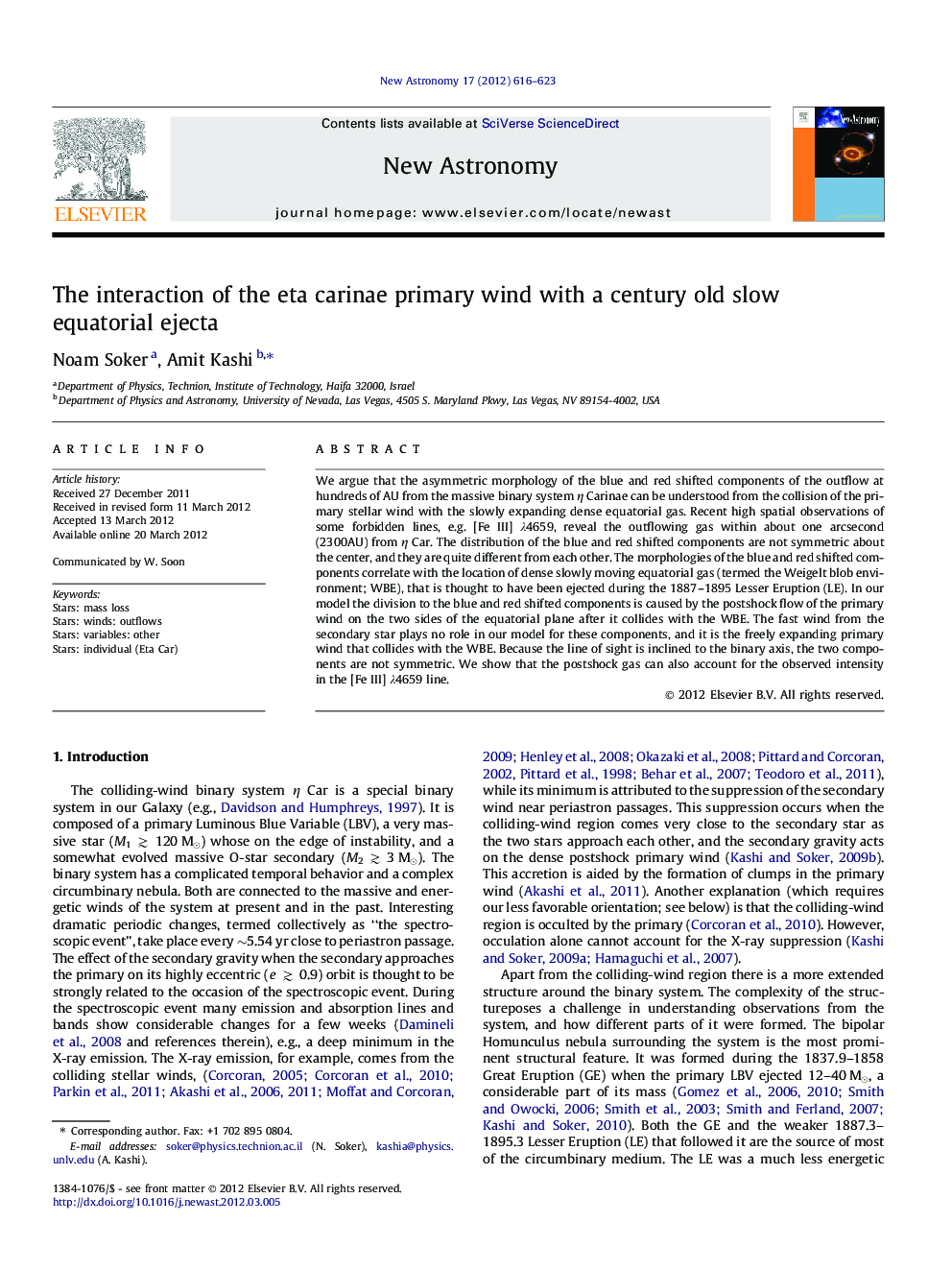| Article ID | Journal | Published Year | Pages | File Type |
|---|---|---|---|---|
| 1779134 | New Astronomy | 2012 | 8 Pages |
We argue that the asymmetric morphology of the blue and red shifted components of the outflow at hundreds of AU from the massive binary system η Carinae can be understood from the collision of the primary stellar wind with the slowly expanding dense equatorial gas. Recent high spatial observations of some forbidden lines, e.g. [Fe III] λ4659, reveal the outflowing gas within about one arcsecond (2300AU) from η Car. The distribution of the blue and red shifted components are not symmetric about the center, and they are quite different from each other. The morphologies of the blue and red shifted components correlate with the location of dense slowly moving equatorial gas (termed the Weigelt blob environment; WBE), that is thought to have been ejected during the 1887–1895 Lesser Eruption (LE). In our model the division to the blue and red shifted components is caused by the postshock flow of the primary wind on the two sides of the equatorial plane after it collides with the WBE. The fast wind from the secondary star plays no role in our model for these components, and it is the freely expanding primary wind that collides with the WBE. Because the line of sight is inclined to the binary axis, the two components are not symmetric. We show that the postshock gas can also account for the observed intensity in the [Fe III] λ4659 line.
► The Weigelt blobs environment of Eta Car was ejected more than a century ago. ► The Weigelt blobs environment interact with the LBV wind. ► The interaction accounts for the intensity of [Fe III] lines. ► This supports an orientation with the companion closer to the observer at periastron.
